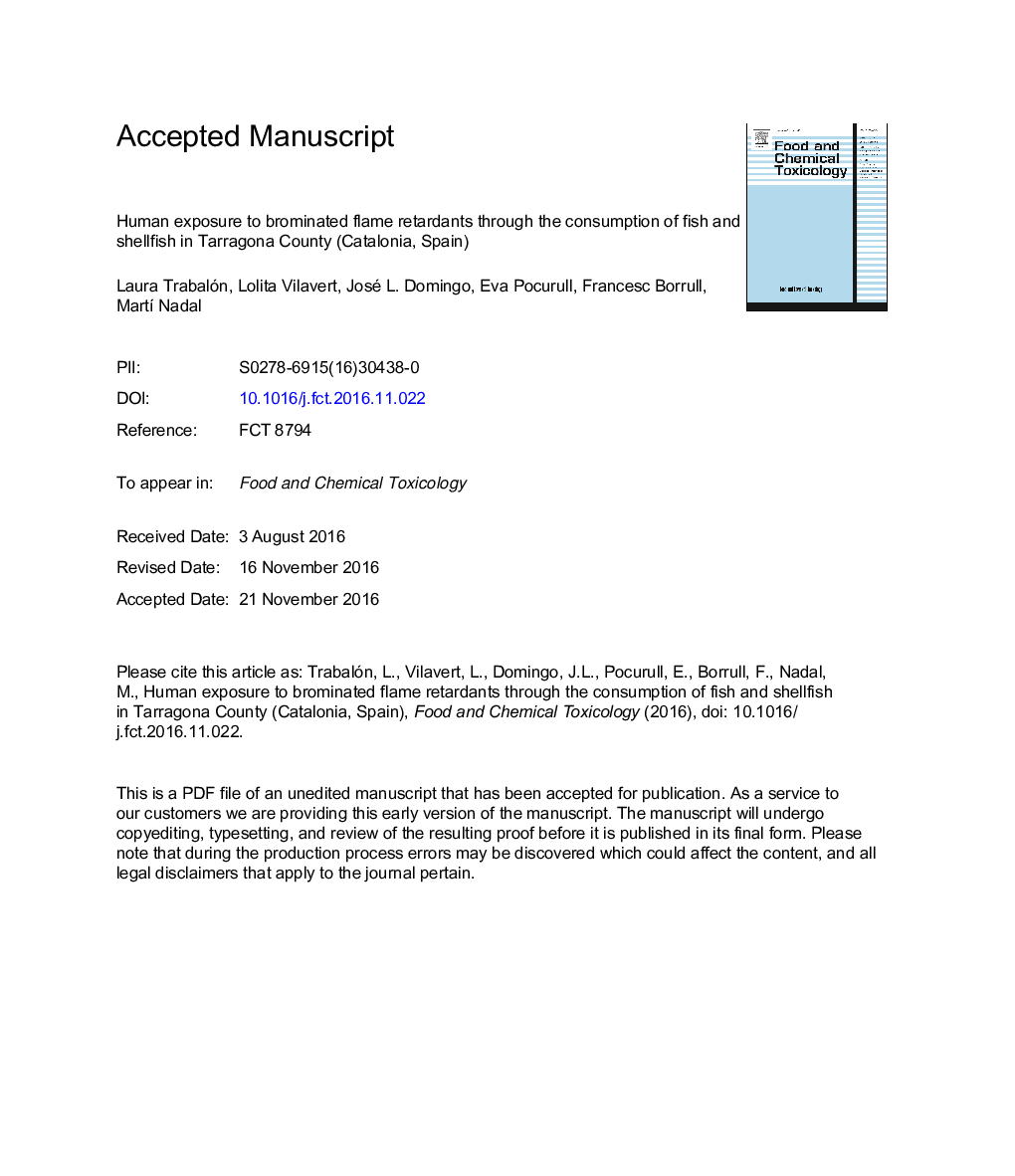| Article ID | Journal | Published Year | Pages | File Type |
|---|---|---|---|---|
| 5560368 | Food and Chemical Toxicology | 2017 | 27 Pages |
Abstract
The concentrations of 19 brominated flame retardants (BFRs) (8 polybrominated diphenyl ethers (PBDEs), 8 methoxylated PBDEs (MeO-PBDEs) and 3 emerging flame retardants) were determined in 10 species of fish and shellfish widely consumed in Tarragona County (Catalonia, Spain), by pressurized liquid extraction followed by gas chromatography coupled to tandem mass spectrometry. A higher occurrence of PBDEs was found in all the analyzed samples, while MeO-PBDEs were only detected in a few ones and the levels of emerging pollutants were relatively low. In contrast, hexabromobenzene was found in almost all samples at concentrations ranging between non detected and 0.2 ng gâ1 wet weight (w.w.). Salmon, sole, hake, cod and tuna showed the highest concentrations of ΣPBDEs (>0.8 ng gâ1 w.w.), while mussel was the species with the highest level of MeO-PBDEs (1.5 ng gâ1 w.w.). The dietary exposure of BFRs through consumption of these 10 species of fish and shellfish by the population of Tarragona County was estimated for different subpopulations, classified according to age and gender. Furthermore, calculations were performed in upper-, middle- and lower-bound risk scenarios. According to our data, the current concentrations of BFRs in fish and shellfish suggest no significant health risks for the consumers.
Related Topics
Life Sciences
Agricultural and Biological Sciences
Food Science
Authors
Laura Trabalón, Lolita Vilavert, José L. Domingo, Eva Pocurull, Francesc Borrull, Martà Nadal,
